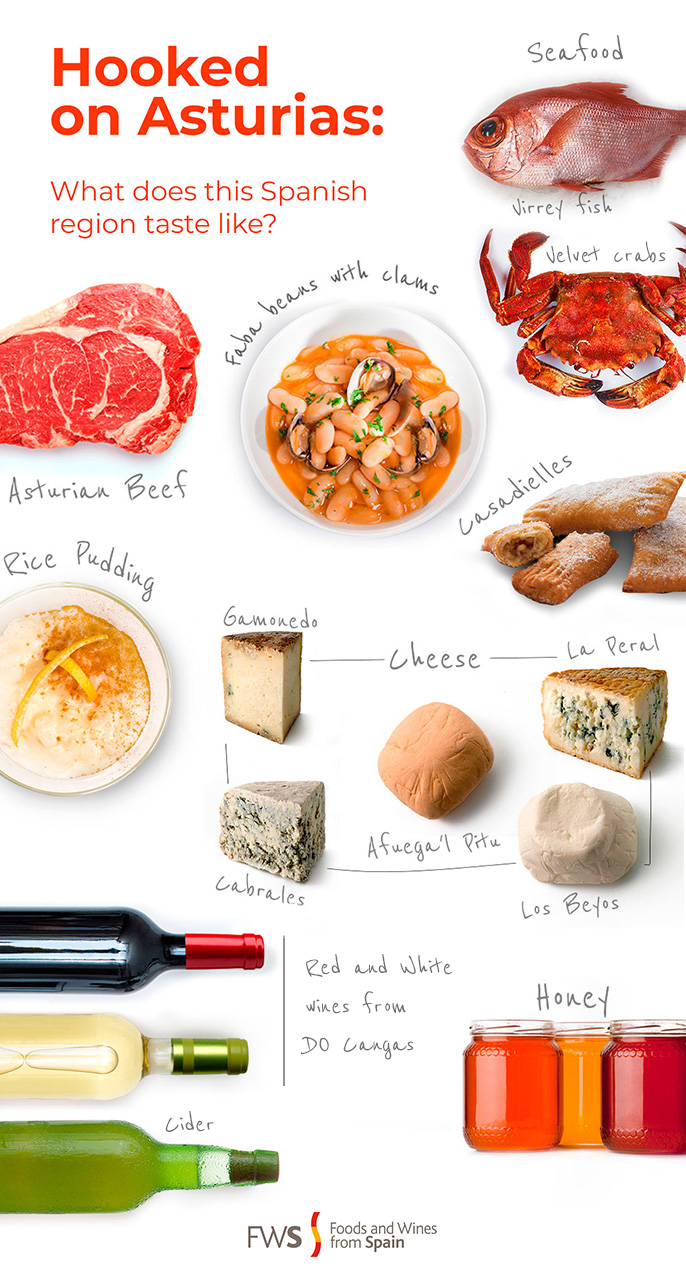.png.transform/rendition-xs/image_image%20(1).png)
What Does Asturias Taste Like?
Asturias is a region in what is known as “Green Spain,” an area in the northern part of the country along the Cantabrian Sea. In recent years, it has become one of the main gastronomic destinations for tourists visiting Spain. Let’s feast on some of the jewels of its pantry together.

Whether traveling to Asturias by road, train or air, the first thing that catches visitors by surprise is the intense carpet of green that covers practically the entire region. Its Atlantic climate, with mild winters and relatively cool summers, is closely linked to the agricultural, livestock-raising and gastronomic tradition of Asturias.
Examples of these are dishes like fabada and fabes con almejas (white bean stew with clams), both of which are based on the delicious fabas (beans) cultivated in the gardens of Asturias. The pastures of the region’s meadows and mountains represent the origins of Asturias’ excellent dairy products, as evidenced by the large number of cows, whose excellent milk is used to make the wide range of singular regional cheeses: PDO Cabrales, PDO Gamonedo, PDO Queso Los Beyos, ; in addition to other specialties like La Peral, Porrúa o Peñamellera Alta, to name a few. The sweetest version of this milk can be found in one of this region’s most authentic desserts: arroz con leche (rice pudding).
The happy cows that graze on Asturias’s green pastures are also the source of the highly valued Asturian beef, which holds the European quality guarantee of Protected Geographic Indication. One of the culinary applications for this beef is the famous cachopo, a hearty dish made from two breaded (with egg and bread crumbs) and fried beef steaks that might be stuffed with different combinations, from the classic slices of Serrano ham and cheese, to other, more novel fillings like wild mushrooms, Piquillo peppers, blue cheese... and more.
To speak of Asturias is to speak of maritime tradition. Its more than 350 kilometers of coastline are the origins of a gastronomy marked by the flavors of the sea, and deeply-rooted products like nécoras (velvet crabs), percebes (barnacles), and different types of fish including rey (kingfish), virrey (alfonsino), chopa (black seabream) and merluza (hake). What’s more, a tour of its coastline presents the perfect opportunity to discover the most protected seaboard in Spain, with its virgin beaches and incredibly beautiful towns like Luarca, Viavélez, Lastres, Llanes, Cudillero and Puerto de Vega.
Asturias also boasts a wide variety of crops that have adapted extremely well to its terrain and climate, such as blueberries and other berries, corn, greens, chard, wild mushrooms, kiwis and apples... very special apples actually: native varieties that are used to make the most famous beverage in Asturias par excellence. This natural cider has been made the traditional way, meaning that it needs pouring, or aerating. Today, this option is complemented by another one, intended more for consumption in restaurants and homes: “new expression” and sparkling cider.
What many people don’t know is that Asturias also produces quality wines, certified under Designation of Origin Vino de Cangas, which is made from native grape varieties that are very interesting on an organoleptic level and in terms of the biodiversity of the vines themselves: red grapes like Carrasquín, Verdejo negro, Alberín negro and Mencía; and the white grapes Albarín blanco, Albillo, Moscatel grano menudo, Godello and Blanca extra.
Text: Rodrigo García Fernández /@ICEX
Translation: Adrienne Smith /@ICEX

